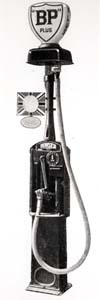
 |
Rover SD1 Snippety Bit - Performance Loss due to Changed Fuel Rating Graham: I put some high octane fuel in her and she was not very pleased! Ramon: Apologies if you already know this, but its likely your ignition timing is incorrect for high octane fuel. For example, I use low octane in my Vitesse (TP) and have the timing set in the region of 2 - 4 degrees BTDC. Were I to use higher octane then the timing should be advanced by 4 - 6 degrees, making it nearer the 8 - 10 degrees BTDC as specified in the handbook. Clearly, engines are not all in the same condition and depending upon (some) additives used in the past they also may behave a little differently. Plus, people do set up their timing with equipment that can, at best, be described as variable and not always using the recommended process. By not advancing ignition and using high octane fuel your engine will under-perform to the point where it may be noticeable as you describe. Assuming, of course, that the ignition system is otherwise performing correctly. I set my timing dynamically, so the engine "just ceases pinking under load", thereafter always using fuel from the same supplier and octane rating. My research and solutions to this issue are explained here: Chris: I'm confused by that statement (above in Red). I didn't think that was the case. Using 97RON without adjustment in an engine tuned for 95RON won't affect engine performance - the higher octane rating represents a lower likelihood of non-spark ignition of the fuel. Ramon: My reading is that whilst different octane rating fuels contain roughly the same amount of fuel energy, the higher octane fuels burn more slowly and resists pre-detonation better as a result. Thus, when ignition has been deliberately retarded to eliminate the knocking that occurs when low octane fuel burns too quickly, now, when a higher rating fuel is introduced it burns more slowly and with the ignition set too late there is every likelyhood os a noticable lack or change in performance. Expressed another way! If the engine is too far down its "power" stroke before all the high octane fuel has efficiently ignited then some of the original fuel energy has been "wasted" when compared to the situation where the low rating fuel has finished giving up its energy sooner. Hence my suggested solution to the symptoms reported by Graeme to advance the ignition and re-capture the wasted energy. Please contact me regarding Errors and Omissions. For more Rover SD1 Snippety Bits, click here:Rover SD1 Tech'l Articles:.......................................................................................................Site Contents: |
|